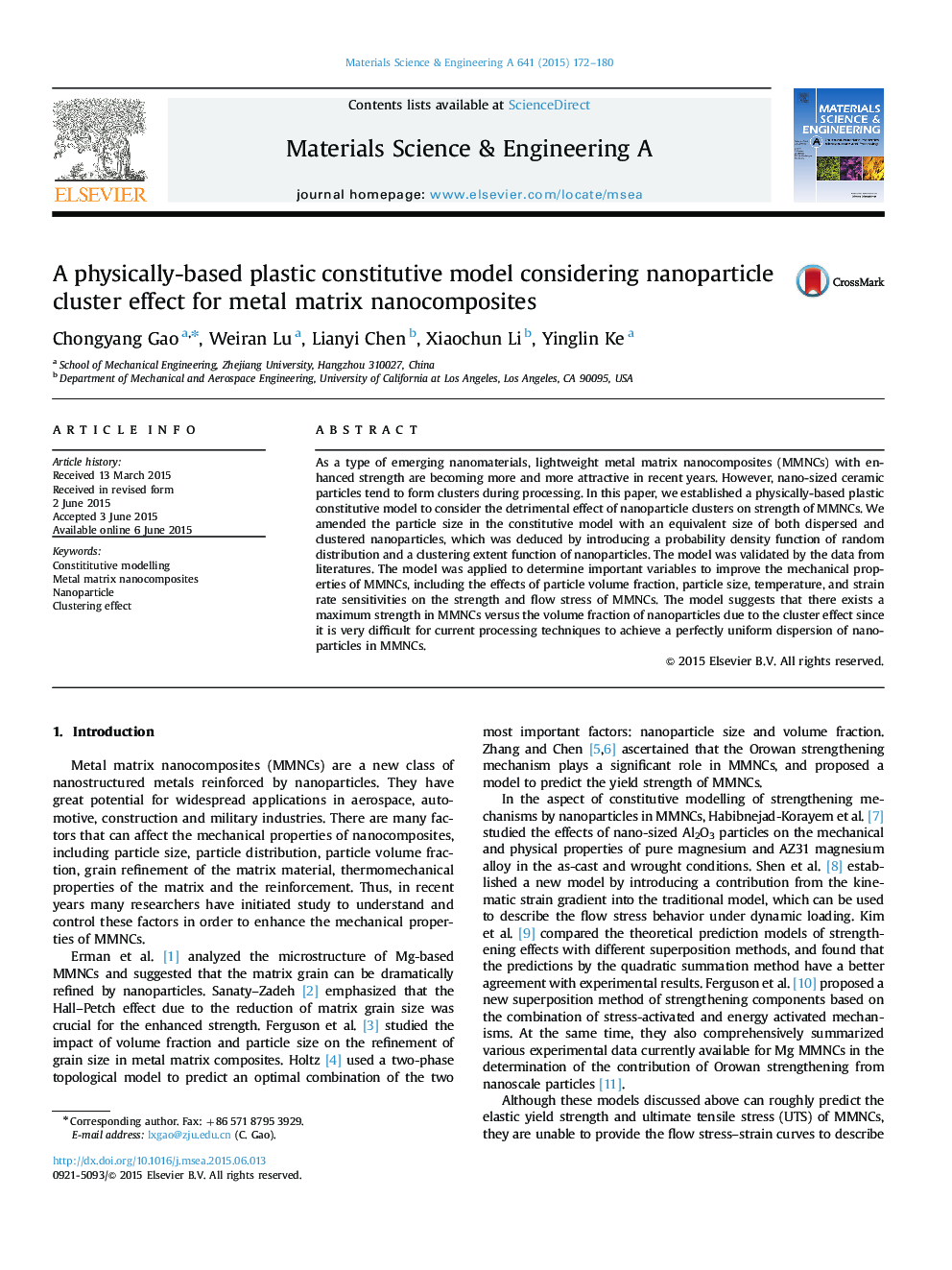| Article ID | Journal | Published Year | Pages | File Type |
|---|---|---|---|---|
| 1574163 | Materials Science and Engineering: A | 2015 | 9 Pages |
As a type of emerging nanomaterials, lightweight metal matrix nanocomposites (MMNCs) with enhanced strength are becoming more and more attractive in recent years. However, nano-sized ceramic particles tend to form clusters during processing. In this paper, we established a physically-based plastic constitutive model to consider the detrimental effect of nanoparticle clusters on strength of MMNCs. We amended the particle size in the constitutive model with an equivalent size of both dispersed and clustered nanoparticles, which was deduced by introducing a probability density function of random distribution and a clustering extent function of nanoparticles. The model was validated by the data from literatures. The model was applied to determine important variables to improve the mechanical properties of MMNCs, including the effects of particle volume fraction, particle size, temperature, and strain rate sensitivities on the strength and flow stress of MMNCs. The model suggests that there exists a maximum strength in MMNCs versus the volume fraction of nanoparticles due to the cluster effect since it is very difficult for current processing techniques to achieve a perfectly uniform dispersion of nanoparticles in MMNCs.
